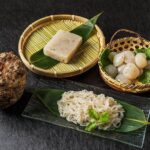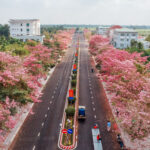The sweltering heat of Saigon in the late May days was suddenly interrupted by a message from a friend, who sent me pictures of strange-looking fruits called “quach.” The fruits had a white-grayish, mold-like appearance, and it brought back memories of my childhood in the Mekong Delta region of Vietnam. I reminisced about the unique taste and texture of these fruits, which some people might find unappealing due to their strong aroma.
The Allure of the Unassuming Quach Fruit
Quach, also known as “gáo,” is a unique delicacy native to the Mekong Delta region of Vietnam. These trees typically grow to a height of 7-8 meters, with a lush green canopy, sturdy trunk, and branches bearing thorns. The fruits themselves are spherical, with a rough, white-grayish exterior that may not be aesthetically pleasing to some. However, beyond this unassuming facade lies a treasure trove of flavors and nutritional benefits.
Mr. Do Suot Anh, an enthusiast of Mekong Delta cuisine, shares his fondness for this fruit: “Quach holds a special place in the hearts of many locals. The best way to enjoy it is to wait for the fruits to fall from the tree, then crack them open and savor the slightly sour, creamy, and crunchy treat inside. The seeds have a delightful crunch, and the distinct aroma of the fruit lingers.” The quach fruit has a remarkable feature where it falls from the tree when ripe, yet the thick shell remains intact, protecting the soft flesh within.
As the quach ripens, its shell turns brown, and the inside transforms into a dark brown, thick, and creamy substance with a mild sourness and a hint of sweetness. The texture is creamy and slightly greasy, with crunchy seeds. The aroma of the quach fruit is what sets it apart. Some find it alluring and captivating, while others may be put off by its intensity. However, this unique sensory experience is what makes the quach an unforgettable treat for those who embrace it.
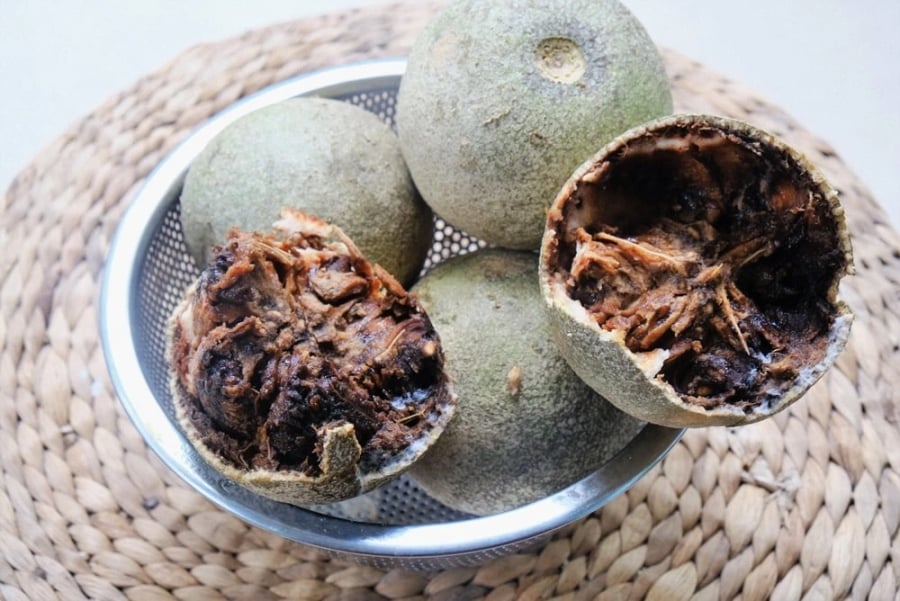
From Rustic Treat to Gourmet Delicacy
In the humble countryside of the Mekong Delta, quach is a natural coolant and a delicious, affordable treat. Locals skillfully crack open the tough shell with a knife and scoop out the creamy flesh to create an array of delectable dishes. One of the most beloved preparations is “quach dam da,” a refreshing dessert made by mixing the quach flesh with a touch of sugar, condensed milk, and ice. The subtle aroma of quach blends beautifully with the creamy sweetness of condensed milk, creating a dessert that is simply irresistible.
The people of Tra Vinh province have taken their love for quach a step further by crafting a premium delicacy: quach liquor. This sweet liquor, made from the fruit, is used to honor guests during festive occasions. It embodies the warmth and sincerity of the Mekong Delta locals.
Additionally, the resourceful locals utilize the quach’s flesh as a filling, wrapping it with various vegetables and dipping it in a thick sauce made from “ca sac” or “cachot” fish. This dish combines the pungent flavor of the fish sauce with the sweet and sour taste of the quach, resulting in a hearty meal that doesn’t overwhelm the palate. Interestingly, the unripe, green quach is also dried and used as a natural remedy for diarrhea, showcasing the fruit’s versatility.
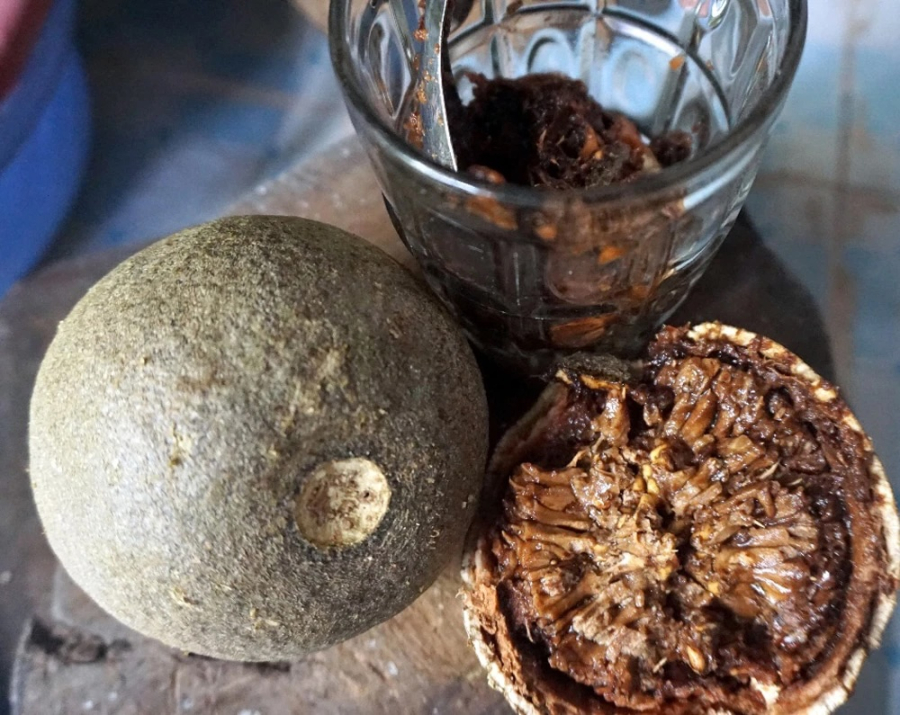
A Controversial Aroma That Leaves a Lasting Impression
The quach fruit has a distinctive aroma, similar to that of durian, which evokes strong reactions. Some find it alluring, while others are put off by its intensity. However, there’s a curious phenomenon associated with this fruit: the more you eat it, the more you crave its unique flavor and fragrance. Some people even keep ripe quach fruits in their rooms, allowing the aroma to permeate the entire space.
Mr. Suot Anh adds, “I personally enjoy keeping ripe quach fruits in my room to fill the air with their wonderful scent.” Indeed, the quach is more than just a fruit; it’s a symbol of the rich cultural heritage of the Mekong Delta and evokes fond memories of childhood for many locals. Despite the controversy surrounding its aroma, the quach holds a special place in the hearts of those who have experienced its unique allure.
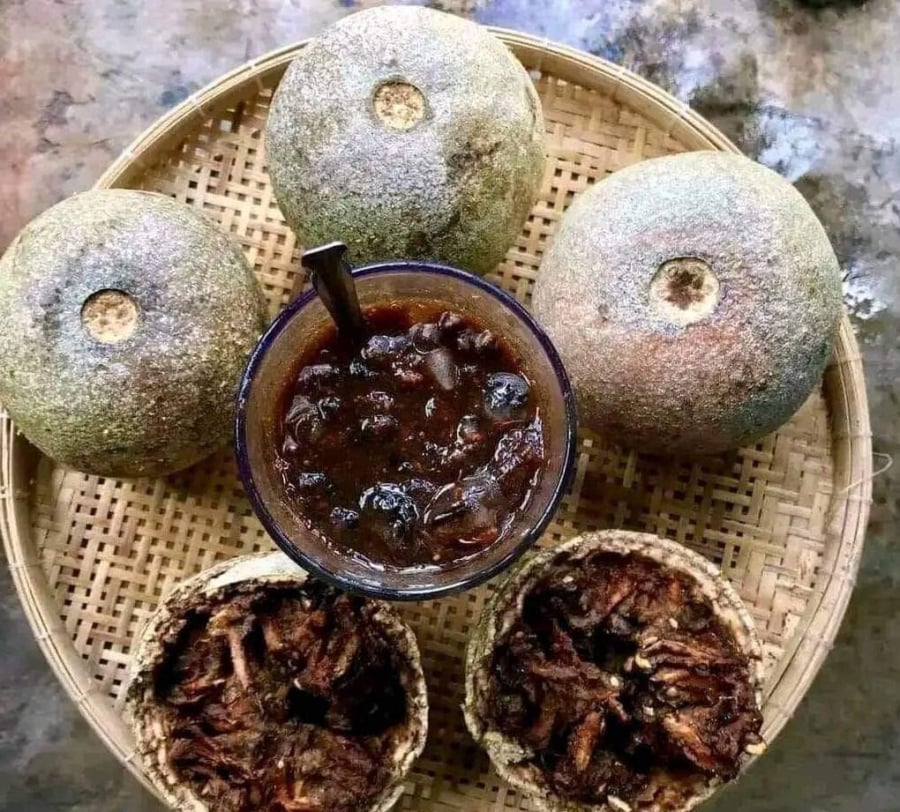
Quach: A Melding of Tradition and Modernity
With the growth of tourism in the Mekong Delta, quach has become an integral part of the culinary experience for visitors. Tourists not only get to taste the fresh fruit but also learn how to prepare various dishes using quach. This offers a unique insight into the local culture and fosters a deeper understanding of the region’s people.
Quach is more than just a humble fruit; it symbolizes the richness and diversity of Vietnamese cuisine. Despite its unassuming appearance, the quach surprises with its complex flavors and textures. It serves as a reminder that we should never judge a book by its cover, or in this case, a fruit by its exterior.
Conclusion
Quach, a unique delicacy from the Mekong Delta, captivates with its simplicity and mystery. Beyond its role as a refreshing treat, quach embodies the culture, traditions, and creativity of the people of the Mekong Delta. When visiting this enchanting region, be sure to indulge in the quach experience and embrace the unexpected delights it offers. Keep an open mind and heart, for the most intriguing discoveries often lie beyond the familiar.
The Underground Delicacy: A Surprise Package of Flavor and Health.
The humble tuber, devoid of any prominent aroma, has captivated the hearts (and taste buds) of many. With its unique flavor, satisfying texture, and remarkable ability to satiate hunger, the nưa root vegetable is emerging as a culinary sensation across Vietnam, from the mountainous regions of the Northwest to the provinces of the Central and Southern regions. This unassuming root vegetable is poised to become a culinary staple, seamlessly blending traditional flavors with modern culinary innovation.
The Pink Trumpet Tree: A Majestic Spectacle in the Heart of the Mekong Delta
The stunning pink trumpet tree-lined road in Soc Trang, located in the Chau Thanh District’s administrative center, has earned the title of “the most beautiful in the Mekong Delta.” This picturesque site attracts hundreds of visitors daily, captivated by its vibrant display reminiscent of cold-weather cherry blossoms.



























